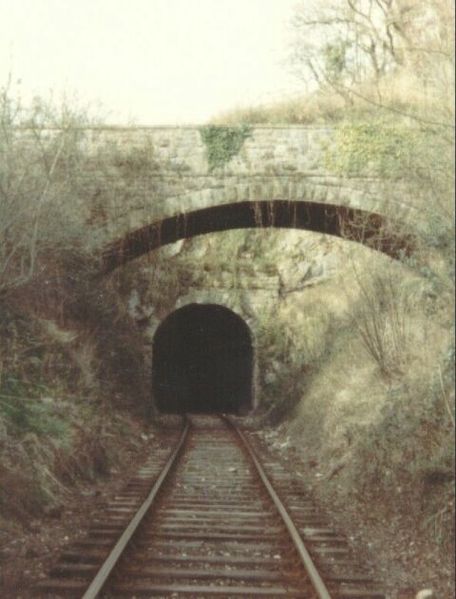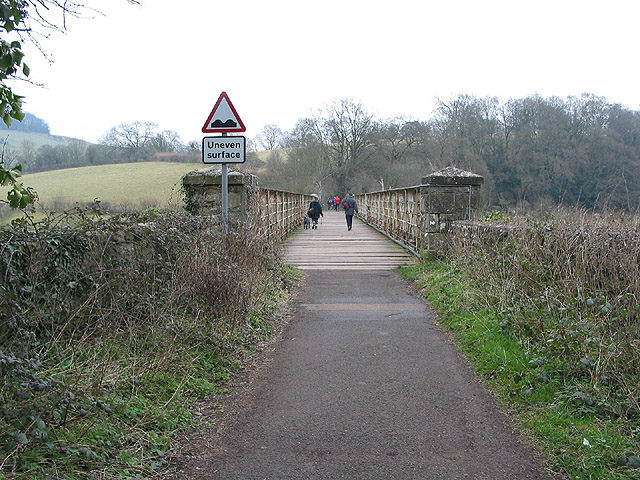This 15 mile stretch of railway runs through the picturesque Wye Valley in South Wales, on the England-Wales border, from Monmouth Troy station to Chepstow, near the River Severn, where it meets the main line from Gloucester to Newport. It was constructed as part of a scheme to provide reliable transport links from the area to Bristol, and to England’s industrial heartlands in the Midlands.
The Wye Valley itself had some limestone quarries, paper mills, and metal works, and large amounts of coal and iron ore were being mined from the nearby Forest of Dean. Monmouth had become an important regional hub for the rapidly growing local industry. Sadly, the whole plan did not develop into reality, but the sections of railway that were successfully built opened up important trade and tourism routes.
The Wye Valley Railway ran into problems right from it’s inception. The first proposal was submitted in 1865 for the construction of a railway that would stretch from Chepstow to Monmouth, which was to follow the winding route of the river. This was inaugurated by Act of Parliament in 1866. Unfortunately, the banking firm that was supposed to finance this whole endeavor ran into financial difficulties.

The collapse of Overend, Gurney & Company caused general chaos in the financial system and the construction company was left penniless, unable to raise the capital to carry on with the undertaking.

And so several years went by and nothing was done, until the time limit on the Act of authorization was breached. The new Wye Valley Railway Act was finally passed on June 16, 1871 following a second application to parliament.

£230,000 worth of shares were offered to the public with the promise that this line would provide a much quicker route from Liverpool. Once the funds were secured, construction was ready to begin once more. It was May 26, 1874, when work commenced. The contractors Reid Brothers and Co. ambitiously planned to complete the whole line in just 18 months.

The plans remained the same – to build a railway which followed the course of the river as it meandered through the steep hills of the Wye Valley. Several points along the route presented complex engineering challenges. For example, according to the blueprints, the railway had to go under two hills which meant that tunnels had to be bored. Tidenham was the longer of the two. It was planned to be 715 yards, but in the end it stretched for 1,188 yards due to structural problems.

On November 18, 1875, a severe storm hit the country. Torrential rain caused widespread flooding, which washed away part of the embankment near Monmouth. Part of the line at Redbrook was damaged too, but here the damage was made by a landslip. The incident was reported in the Times but no one was hurt.

A further delay to the whole project was made by an agreement to add a branch line to Tintern, which involved building one more bridge across the river, authorized by one further Act of Parliament, the Wye valley Railway (amendment) Act 1875.
Once done, the construction of the railway reached the sum of £318,000.

The formal opening ceremony took place on October 19, 1876 and the Wye Valley Railway was opened to the public on November 1, 1876. There was one goods train and four passengers trains every day. It was leased to and operated by the Great Western Railway (GWR).

But the Wye Valley Railway as an independent company was running on thin financial line, becoming bankrupt more than once. And so in 1905 it became a part of GWR. A number of additional halts were added along the line, and GWR ran several popular regular tourist excursions. Diesel railcars were introduced during the 1930s.

But with time the Great Western Railway ran into some harsh competition that came from road transport. Aside from a few special services, the line was closed to passengers in 1959. It was further hit by national cuts to the railway network in 1963-5 and there was no other solution than to close the line. Over the next three decades, the railway was slowly shut down, starting with 1964 and ending in 1990 when the Tidenham Quarry closed.

Today a great number of the structures still remain including the bridges and the viaduct which is used as a pathway. A large section of the old line is now part of the Sustrans National Cycle Network One and Tintern Station, once a popular tourist destination for passengers on the scenic line, has been converted into a visitor center.
